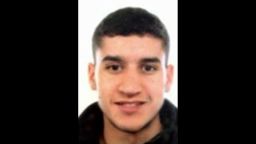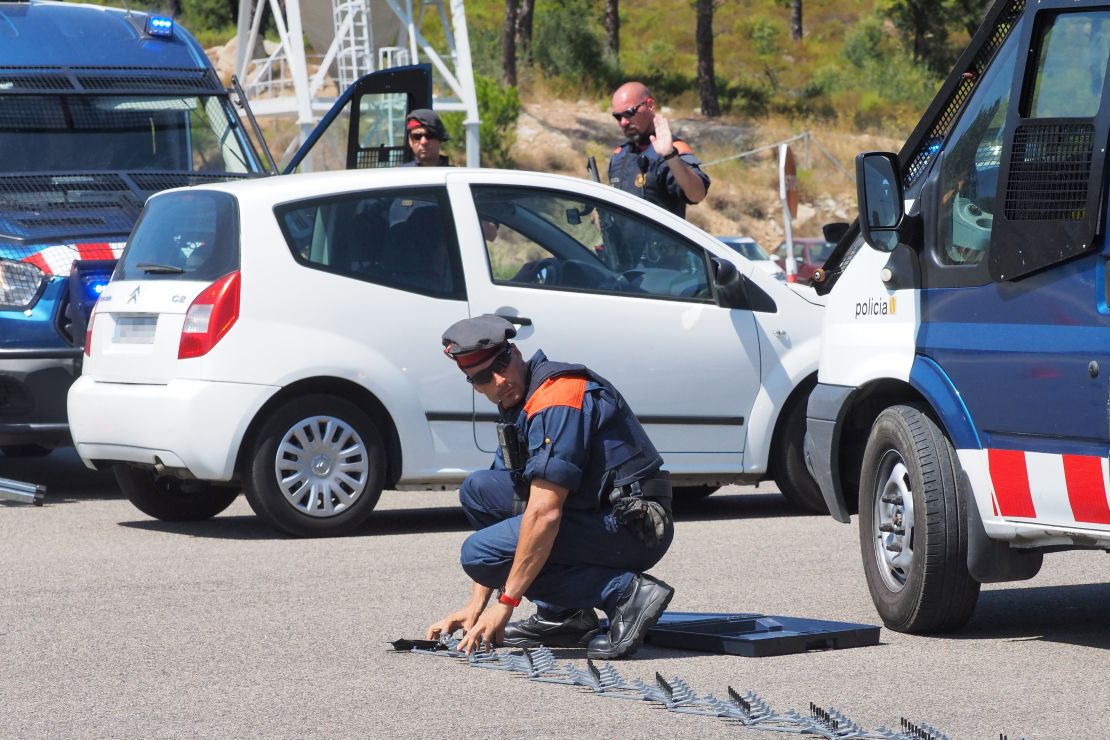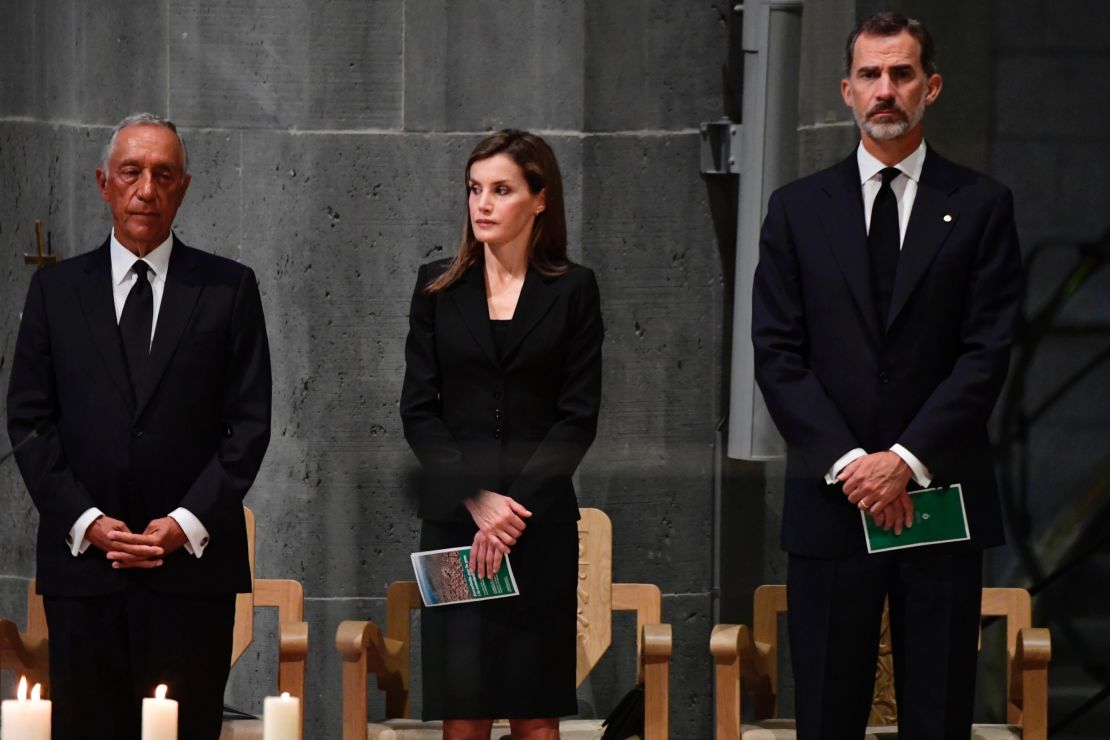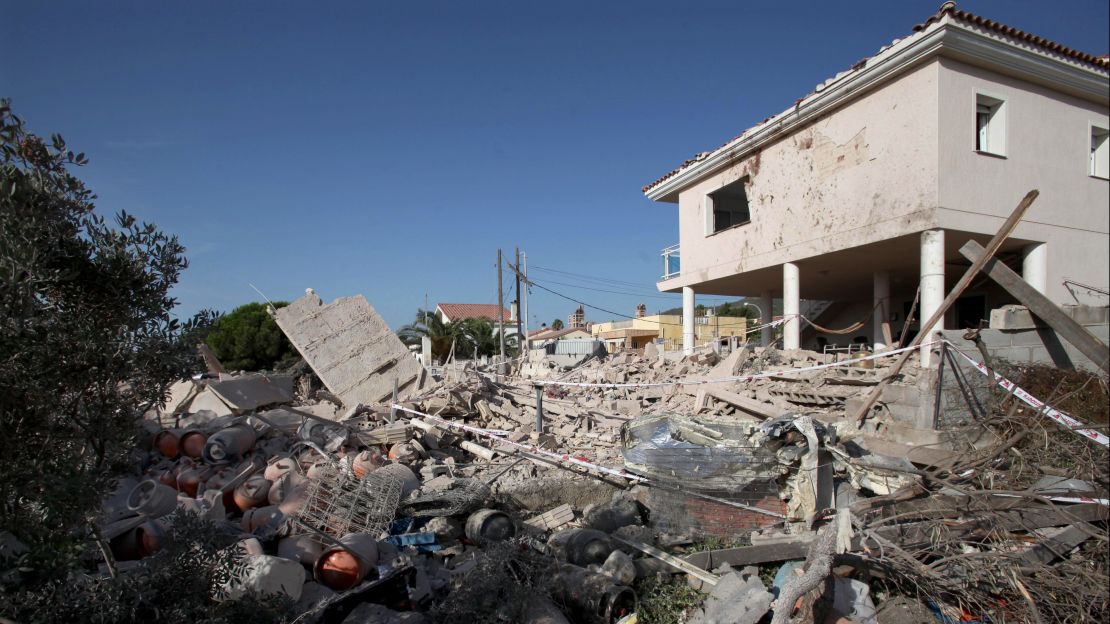Police in Spain say they don’t know the whereabouts of the suspected driver in the van attack in Barcelona that killed 13 people.
Catalonia Police Chief Josep Luis Trapero told reporters Sunday that while the country’s border with France had been reinforced, the suspect remained at large and could have eluded authorities.
Speaking three days after a van plowed into pedestrians on Las Ramblas in the heart of Barcelona, killing 13 and injuring 120, Trapero said the search for Younes Abouyaaqoub was ongoing.

“If we knew that he was in Spain and where, we would go after him,” Trapero said. “We don’t know where he is.”
Spanish media say Abouyaaqoub is a 22-year-old Moroccan national.
Trapero said police believe there was only one person inside the van that carried out the attack Thursday, though they are yet to confirm that person was Abouyaaqoub.
He also said 12 terror suspects linked to the Barcelona attack did not have previous records or intelligence files related to terrorism.

United in grief
The news from police came hours after hundreds gathered at Barcelona’s famous Sagrada Familia to mourn those killed.

Spain’s King Felipe and Queen Letizia were among those who prayed for the 14 people killed in Barcelona and Cambrils.
An American, three Italians and a Canadian are among the victims.
On Sunday, Spanish authorities announced that a 7-year-old Australian-British boy was also killed. Julian Cadman was walking with his mother on Las Ramblas in Barcelona when the attacker’s van veered into the crowd. His mother was injured and Julian had been reported missing until Sunday.
The attack in Cambrils took place on Friday morning, when five attackers wearing fake suicide belts drove into pedestrians – killing one and injuring six.
Police shot all five assailants dead but said late Friday it was “increasingly unlikely” that the Barcelona driver was among them, Reuters reported.
Manhunt underway
On Saturday, a Catalan police spokesman identified three of the five suspects killed in Cambrils as Moussa Oukabir, Said Aallaa and Mohamed Hychami.

The terror cell involved in the attacks – believed to number about 12 members – has been “completely dismantled,” Spanish Interior Minister Juan Ignacio Zoida said Saturday.
Eight of the 12 lived in Ripoll, a city north of Barcelona. Three were arrested, and one was Oukabir – one of the dead suspects. Another arrest was made in the village of Alcanar.
CNN reporters went to Oukabir’s apartment in Ripoll. A neighbor, Raimon Garcia, said Oukabir was one of four siblings – two brothers and two sisters.
Oukabir’s brother, Driss, was among those arrested. He turned himself into police when his identification was found in the Barcelona van, telling authorities he wasn’t involved in the attack.
A man who claimed to be a cousin of the brothers said Moussa Oukabir was “brainwashed.”
A woman who lives next to a mosque in the neighborhood told CNN that she had witnessed the Oukabir brothers attending the place of worship “every day for many years.”
Bulldozer clears rubble in Alcanar

The ruins of the house in Alcanar, a quiet beach town about 125 miles (201 kilometers) south of Barcelona, may hold the key to unraveling the plans and methods of the terror cell.
Police said Sunday that the group inside the house had been planning for “one or more” attacks on Barcelona. The remains of two people have been found on the site so far, police said.
Authorities suspect the property was being used as a base to make explosives that could have caused even more devastating attacks in Barcelona, Cambrils and possibly elsewhere had they not blown up prematurely.
Explosives experts brought in a bulldozer Saturday to clear rubble before conducting a number of controlled explosions at the site in Alcanar’s Montecarlo area.
So far, police have found more than 100 of gas canisters on site.
The city’s vice mayor, Jordi Bort, told CNN the house belonged to a bank and that the group had been squatting there illegally without its knowledge.
The town is home to a mix of yearlong residents and others who just spend holidays or weekends here, he said. Neighbors said they did not suspect any wrongdoing at the property.
The septic tank of the house, which had only one floor, was used as storage for the tanks and explosives, Bort said.
Source: Traces of TATP found
Wednesday’s explosion meant the attackers were unable to use material they were planning to deploy in the attacks, Trapero said Friday.
The attack in Barcelona, capital of the Spanish region of Catalonia, was therefore “more rudimentary than they originally planned,” Trapero said.
Trapero said the suspects in Alcanar had been trying to “make explosives out of butane gas among other things.”
A source briefed on the investigation said a preliminary assessment indicated there were traces of the powerful explosive TATP in the rubble.
TATP is made by adding an acid to a mixture of acetone and hydrogen peroxide solution and can easily result in accidental detonation if mistakes occur in the preparation.
TATP was used in the November 2015 Paris attacks, the March 2016 Brussels bombings and the May bombing in Manchester, England.
Many of those who have successfully made TATP received some form of terrorist training.
Inspector Albert Oliva, a spokesman for Catalan police, told CNN that investigators are still trying to determine what materials were in the home.
“We need to analyze carefully what caused the explosion, the elements that were inside the house,” Oliva said.
ISIS issued a formal claim of responsibility for the two attacks in Spain. However, the extremist group did not provide any proof it carried out the attacks or provide the names of the attackers or the number of them.
There are also inconsistencies between ISIS’ statement and the police version of events.
CNN’s Eliza Mackintosh reported from Barcelona, James Masters wrote from London. CNN’s Laura Smith-Spark, Vasco Cotovio, Hazel Pfeifer, Sandrine Amiel, Marina Calahorra, Lorenzo D’Agostino, Paul Cruickshank, Claudia Rebaza, Isa Soares and Mariano Castillo contributed to this report.

